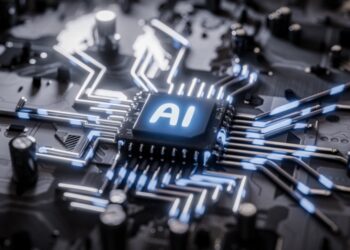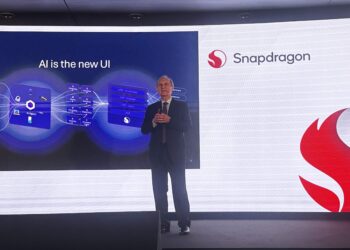By the turn of the decade, AI is expected to deliver a staggering $320 billion in value to the Middle East economy. With so much potential benefit to be had, regional organisations have entered the race to implement the most impactful use cases and gain an edge on the competition. But they must also do so with a fair degree of trepidation. After all, the International Monetary Fund has stated that AI will affect almost 40 percent of jobs globally, a figure that is set to be close to 60 percent in advanced economies. To avoid potentially disillusioning their greatest asset — their human capital — organisations should direct their AI investments to areas where the technology can augment employees rather than make them redundant.
One application which perfectly meets this criterion is that of IT Service Management (ITSM). The IT skills shortage in the Middle East is well documented — by some estimates, the region needs over 50,000 additional IT experts to fill digital transformation roles. This places a premium on top talent, which is often scooped up by the region’s enterprise scale organisations. Directing AI expenditure towards ITSM can help overcome a key impact of this shortfall, and make advanced IT service capabilities accessible to a broader range of businesses.
GenAI makes effective ITSM achievable for any organisation
Traditionally, robust ITSM solutions have been reserved for larger enterprises with substantial resources to invest in technology and skilled IT workers. For many small and medium-sized businesses (SMBs), the cost of implementing advanced and sophisticated ITSM solutions has historically been a significant barrier. In the UAE for example, where the nation’s 550,000 plus SMEs contribute as much as 63.5 percent of the non-oil GDP, extending enterprise grade ITSM to this critical segment could yield significant economic advantage. And GenAI does this by providing scalable ITSM features that do not require extensive financial investment or skilled workforces.
GenAI in ITSM helps SMBs to perform complex ITSM functions without needing specialised teams. Tasks that once required significant manual effort can now be automated, freeing up resources for other more strategic or creative work, and advanced tasks that once required robust manpower can now be achieved with often understaffed and overstretched teams. By leveraging GenAI-enhanced ITSM, SMBs can achieve advanced reporting and analytics, streamline workflows, and support training initiatives more effectively. AI-driven analytics empower SMBs by processing vast datasets swiftly, offering detailed insights that aid in IT issue resolution and decision-making.

In IT service desks, GenAI revolutionises workflow management by automating routine tasks and providing intelligent assistance. This automation optimises productivity by allowing IT professionals to focus on more complex issues, thereby improving efficiency and service quality. For instance, AI can autonomously handle incident triage, categorisation, and prioritisation, ensuring swift and accurate resolution of IT issues. This streamlined process not only enhances operational efficiency but also boosts employee satisfaction and overall service delivery to end-users, both internal and external.
Furthermore, AI enhances training and skill development within SMBs’ IT teams. In the Middle East, more than half of employees (54 percent) trust in employers’ ability to stay updated with the latest trends and encourage them to apply their newly acquired skills. Organisations can prove themselves deserving of this trust by leveraging AI-powered personalised learning experiences that enable IT professionals to continuously acquire new skills and stay updated with evolving technologies. These AI-driven training programs adapt to individual learning needs, helping ensure efficient skill enhancement despite limited organisational resources. By fostering continuous learning, AI empowers SMBs to maintain competent IT teams capable of effectively managing AI-driven ITSM operations and supporting organisational growth.
GenAI and human collaboration are key to powerful ITSM
GenAI’s contribution to democratising ITSM can also be understood by exploring the relationship between the technology and the people using it. Despite some reported concerns about AI replacing human jobs, the reality is that effective GenAI in ITSM is designed to work alongside IT professionals, not replace them. Industry professionals agree with this: A recent SolarWinds IT Trends Report showed that surveyed IT workers are generally not worried about AI taking over roles. Instead, they see AI as a valuable tool that enhances their capabilities and helps achieve business goals.
The key is ensuring that the AI is built to work for human users. To achieve this, it’s important to consider frameworks like AI By Design, which has a set of pillars to establish optimal practices around AI. One of those pillars is “Simplicity and Accessibility” — AI experiences should be seamless and intuitive, preventing fatigue and streamlining decision-making. GenAI empowers IT professionals to make better decisions but does not make those decisions itself. Human professionals remain essential for validating and implementing GenAI-recommended solutions in a real-world context. The symbiotic relationship between IT professionals and GenAI can be viewed as a partnership allowing the highest productivity, efficiency, and effectiveness.
Human oversight is also crucial in AI-driven ITSM operations to ensure that AI tools function correctly. IT professionals monitor AI-enhanced tools, intervene when necessary, and adjust to improve performance. This oversight helps prevent potential issues and ensures that AI tools are used responsibly and effectively. By combining AI’s processing power with human judgment, organisations can achieve a higher level of operational excellence.
GenAI excels in incident management and root-cause problem solving, but these functions must also work in conjunction with human oversight. AI can quickly analyse incident patterns, identify root causes, and suggest remediation steps. IT professionals can then review these suggestions, make adjustments as needed, and implement solutions. This collaborative approach helps accelerate incident resolution, minimise downtime, and improve overall service quality.
GenAI’s integration into ITSM might seem like it’s reaching an inflection point, but its impact is just beginning to scratch the surface. GenAI simultaneously elevates and democratises effective ITSM. Executed with a human-centric approach, it can be a deeply effective way to empower IT teams and empower the critical SMB sector to contribute even more significantly to regional economies.










Discussion about this post